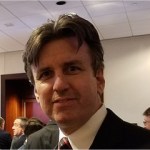 A worker stacks cranberries during America s first food scare, in 1959. Credit: PHOTOGRAPH BY TED RUSSELL / THE LIFE IMAGES COLLECTION / GETTY. Link: The New Yorker
A worker stacks cranberries during America s first food scare, in 1959. Credit: PHOTOGRAPH BY TED RUSSELL / THE LIFE IMAGES COLLECTION / GETTY. Link: The New Yorker
No Cranberries for President Eisenhower, read an Associated Press headline in 1959. The dire warning came from the Secretary of the United States Department of Health, Education, and Welfare (predecessor to the Department of Education and the Department of Health and Human Services) who found that some cranberries had tested positive for aminotriazole in rats. In rats. Today, that seems almost silly to read, unless you are an employee at Natural Resources Defense Council or one of their donors - as our Thanksgiving Holiday Menu shows so adeptly, everything in a celebratory dinner, whether it is 100 percent organic or not, contains a carcinogen known to cause cancer in rats. But in 1959, this was big news. Ocean Spray responded as any rational group would, noting that you would have to consume carloads of the stuff all at once to get any harm, but the health scare still took off across the nation when the United States Food and Drug Administration, bound by the Food Additives Amendment of 1958 (the "Delaney Clause," so named after a New York City Congressman) was invoked. This essentially harmless pesticide suddenly joined cigarette smoking and atomic radiation as carcinogens because of a test in rats. Sound like IARC claiming bacon is a carcinogen just like cigarettes and asbestos? Well, yes. It is the reason environmental groups have 1,000X the annual donations of pro-science groups like us - they know that hazard is meaningless without considering exposure and exploit public concern over it anyway. Today, "we treat dietary panics as a national pastime," writes Michael Tortorello in The New Yorker and that is certainly true. Leveraging that craze in 1959, Rachel Carson and then her descendants set off a firestorm by claiming they knew someone who sprayed DDT and died a few months later, and from that moment on it has been open season on the American public by activists groups who raise money promoting fear and doubt about food. (want to instead fund science and get a tax deduction? you can do that here) Tortorello got the details of the cranberry panic of '59 from our popular Facts vs. Fears: A Review of the Greatest Unfounded Health Scares of Recent Times publication, which Dr. Gil Ross recapped this week for some Thanksgiving science. Like everything we do, both are available free of charge to the public. But you don't need a holiday to get evidence-based information. As the Wall Street Journal succinctly put it about us, we "know the difference between a health threat and a health scare" and we do it every other week of the year also. So eat up! The calories you consume will harm you long before those carcinogens in your Thanksgiving meal will. P.S. Tryptophan isn't making you sleepy either.



